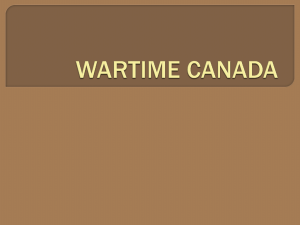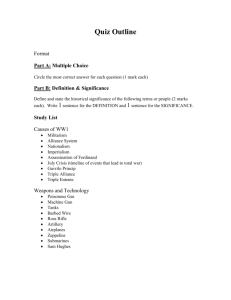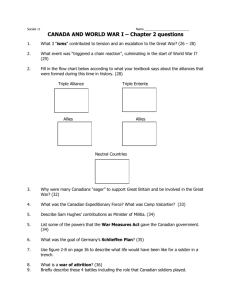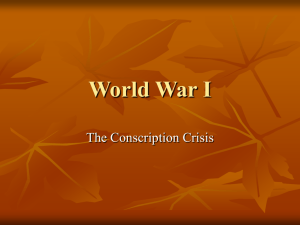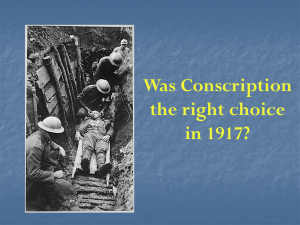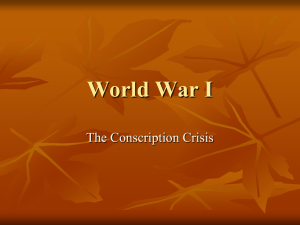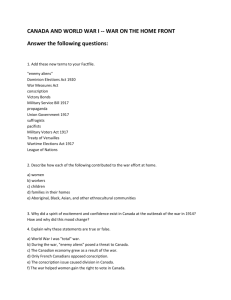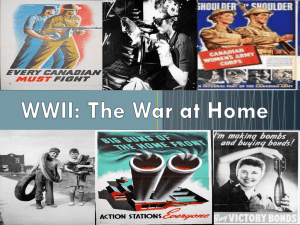Conscription PPT
advertisement
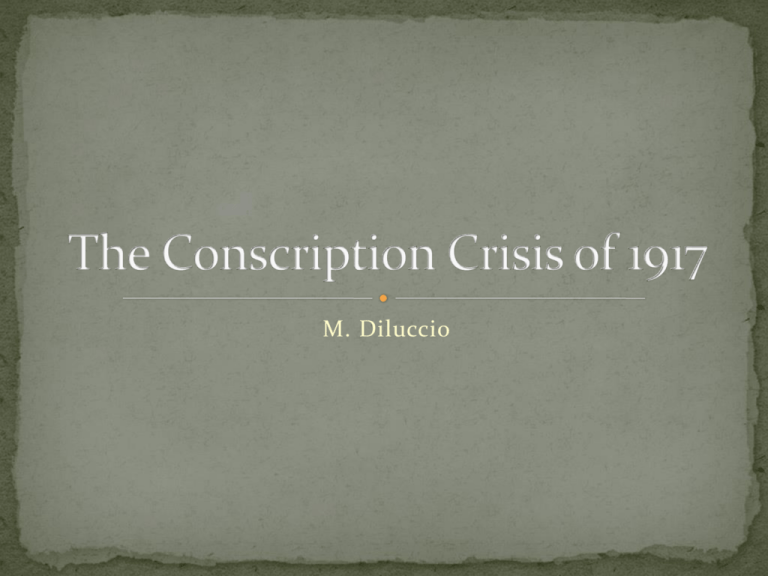
M. Diluccio Recall – At the start of WW1, many people volunteered to fight in the Canadian army. For the volunteers, the war was to be an adventure. As well, the war would be over very quickly. It did not go as thought. The war was long, and everyday, more and more soldiers were killed or wounded. By late-1916, people stopped volunteering. Would you volunteer to go fight in this war? Month Casualties New Enlistments January 4 396 9 194 February 1 250 6 809 March 6 161 6 640 April 13 477 5 530 May 13 457 6 407 June 7 931 6 348 July 7 906 3 882 August 13 232 3 117 September 10 990 3 588 October 5 929 4 884 November 30 741 4 019 December 7 476 3 921 TOTAL 122 946 64 339 Prime Minister Robert Borden -Went to visit the Western Front in 1917, and realized how important it was to send more Canadian soldiers there. Canada needed new soldiers to help the Allies win the war. How could Canada get more soldiers? The Answer – Conscription. It is like the Draft. Conscription is military service by all men of a certain age. It is required by law. The Canadian government introduced the idea in 1917. Do you think everyone agreed with conscription? Many groups disagreed: French-Canadians said, “No.” To the FrenchCanadians, Canada was fighting to protect England. This was not a French war. Farmers said, “No.” Their sons were needed to help harvest the crops to feed the soldiers. Labour unionists said, “No.” They needed workers to operate the machines making the war equipment. Now the politics becomes interesting… Women in Canada in 1917 could not vote. Women were not persons under Canadian law. The Government of Canada had to call an election over the issue of conscription. The Government needed votes to win. Who would they let vote to win? The Government negotiated with the leaders of the women’s rights groups in Canada. In return for women supporting conscription, the Government granted the vote to two groups in the next election: 1) Soldiers who were fighting overseas (Military Voters Act) 2) Mothers and wives of soldiers who were fighting overseas (Wartime Elections Act) Why would the Government of Canada want these two groups to vote in the conscription vote? Why would the women’s rights groups agree to support the government in return for soldiers’ wives and mothers being given the right to vote? CONSCRIPTION ELECTION (1917): PM Robert Borden’s Party (Union – for conscription) Vs. Wilfred Laurier’s party (Liberal – against conscription) RESULT: Prime Minister Borden’s government won a very large victory. However, 95% of Laurier’s supporters were form Quebec. Clearly the people of Quebec did not support conscription. Quebec City Riots: 1918 - Four protesters dead ; 10 soldiers wounded The Government won the election. In 1918, conscription was introduced to Canada. WW1 ended soon afterwards. Very few Canadians were conscripted. However, Canada was now divided along lines of French and English. While English-Canada has largely supported conscription, French-Canada said, “No.” This division changed Canada. As well, some women could now vote. More women wanted the right to vote. The door was open…just a crack for more women’s rights. The Conscription Crisis truly changed Canada.
